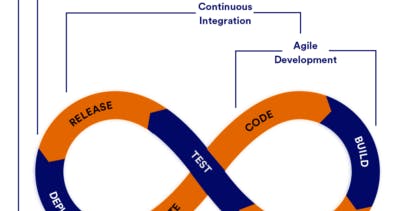Today, delivering high-performing applications fast and efficiently is a common challenge for development teams. That’s because continuously improving software products is crucial for meeting customer demands.
The DevOps paradigm appeared as a solution to the Agile Development methodology that helps organizations deliver high-quality software faster. Yet still not fast enough.
So how can you accelerate app development even more? By optimizing how you use your DevOps production environment.
In this article, we’ll provide you with tips and advice from real teams that have successfully sped up development in DevOps. By reimagining their delivery process and making use of all the technology and tools at their disposal, they’ve managed to shorten their time-to-market and stay one step ahead of their competitors.
Now, you can do this too!
1. Follow an Agile Scrum Approach
Although it might seem counter-intuitive, following an iterative approach can actually improve the speed at which you develop and release new features.
For larger projects especially, instead of running DevOps on all components at once and releasing them as a big update, you can develop, test, and release each feature/update individually, until everything is implemented.
This agile scrum approach allows us to be quicker to market on customer-demanded features than if we were to simply wait until all features were complete and release all at once.
However, this brings us to the next point:
2. Have a Good Testing Team
“Releasing new features/updates prematurely can do more harm than good,” says Nate. So if you want to make sure you don’t compromise code quality when speeding up development and release, make sure you have a good testing environment and testing team.
This is when having separate environments for staging and production is extremely helpful; because it gives you the chance to identify possible issues before release. Pushing new features into production without sufficient testing could prove disastrous. Not to mention that, without a staging environment, you wouldn’t have a previous stable version to rollback to.
3. Automate the Creation of Staging Environments
Most staging environments are created for the final testing, for that test exclusively, and then they’re disposed of. This takes up quite some time when done manually. Fortunately, DevOps automation helps teams speed up app development by cutting down on manual work.
For example, instead of creating a staging environment from scratch, you can simply clone production. Or, if you have disaster recovery set up for production, that could also be used as your staging environment.
The third option, and this is where Bunnyshell can help you, is to automate your staging environment’s deployment. And if you’re using a public cloud, Bunnyshell can also help you cut down on your costs because it can automatically scale up and down, so you only pay for what you use.
4. Implement Blue/Green Deployment
This technique is extremely helpful for speeding up development. How it works is that you set up two production-level systems: one that runs the latest version of your app and one that runs the next version and serves as a staging environment.
You never update your current active environment (production). Instead, you apply and test all updates on the inactive one (staging). If it passes, you slowly redirect traffic to it and restart the process. Now you update the old version that can serve as a staging environment, as well as a backup in case the new version has issues.
5. Follow a Continuous Integration, Continuous Delivery, Continuous Deployment Approach
Continuous Integration and Continuous Deployment are the core of DevOps. They enable teams to deploy code faster, which significantly impacts the frequency (and quality!) of the releases. By following these two approaches, teams can cut down on development time from months to even hours!
How? Updates are applied faster, so they reach production more frequently. In turn, this accelerates the development cycle and reduces deployment time.
6. Invest in Tools to Power a Strong DevOps Culture
DevOps emerged as a cultural shift. It’s not the tools but the collaboration between Development and Operations that speeds up the process. The companies that implement an efficient way teams can communicate and collaborate are the ones that manage to speed up DevOps and solve problems easier.
If a problem occurs and teams are looking for someone to blame instead of communicating with one another to solve the issue, then the company isn't doing DevOps correctly.
However, collaboration can’t help if the production environment is badly set up.
That’s why we strongly encourage DevOps teams to take advantage of platforms and tools that help them automate specific processes in the DevOps cycle. This way, they can dedicate more time to development, which significantly increases code quality and, ultimately, improves time-to-market.
This is exactly what we had in mind when we launched Bunnyshell. Our platform enables your team to lower the complexity of deploying applications and automate maintenance and monitoring. This way, you save time that you can then invest in improving your product/service instead.
7. Avoid Overly-Complex Tools
However, not all DevOps tools are created equal, and some can actually cause more friction and slow down development. Here’s what Mark recommends:
“You should avoid tools that require a lot of customization before integrating them into your pipeline. The problem with this is that it requires a special set up, which often creates tech debt and makes it a nightmare to debug when something goes wrong.”
Summing Up
We know from experience how challenging speeding up app development can be. So we hope these tips will help improve both the quality and the frequency of your releases.
Do you have other suggestions for accelerating development in a DevOps production environment? Make sure you let us know, as we’re always curious to try new things.
Looking for a self-service DevOps automation platform that helps you improve speed, scalability, and security?
